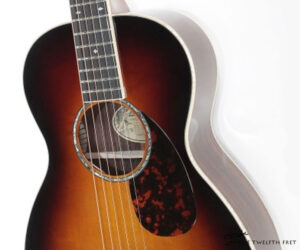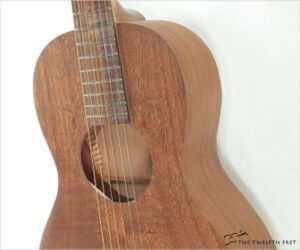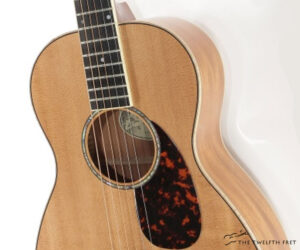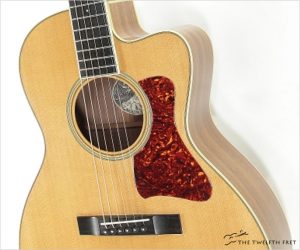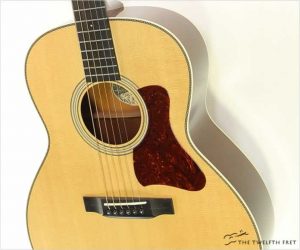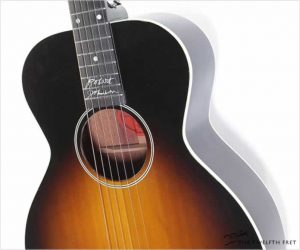Seen here is a very good Larrivee P09 Rosewood Custom parlor guitar, built during mid 2023 at Oxnard, California. The ‘Custom’ refers to the tobacco sunburst top, diamond style mother of pearl position markers, and the abalone Vine logo headstock inlay with silver border. The top is Bearclaw figured Sitka Spruce, with Indian Rosewood for the Maple-bound sides and back.
This instrument has sold
MORE →